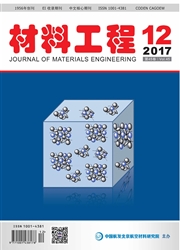

 中文摘要:
中文摘要:
采用基于WND(Wagner-Nairn—Detassis)能量模型的单丝断裂法,测试了5种国产炭纤维、2种国外炭纤维与航空结构用环氧树脂复合体系的界面断裂能,通过SEM,AFM,IR以及XPS等手段分析了7种炭纤维的表面物理化学特性,并研究了炭纤维特性与界面断裂能的关联。结果表明:对于所研究的炭纤维/环氧树脂体系,去除炭纤维表面上浆剂后界面断裂能下降,说明上浆剂可以在一定程度上提高界面的韧性。此外,实验范围内,纤维拉伸强度较高时,测得的界面断裂能较高,炭纤维表面粗糙度较高时,测得界面断裂能较高,说明纤维拉伸性能和表面粗糙度对界面韧性有重要影响,而与这两种因素相比,上浆剂的种类影响相对较小。研究结果为高性能国产炭纤维的研发和炭纤维/树脂匹配性的评价提供了重要的实验数据。
 英文摘要:
英文摘要:
By using the single fiber fragmentation test (SFFT) based on Wagner-Nairn-Detassis (WND) energy model, the interfacial fracture energy of five kinds of homemade and two kinds of for- eign carbon fibers/epoxy resin systems for aeronautical structures was measured. The surface physical and chemical characteristics of the seven carbon fibers were analyzed by means of SEM, AFM, IR and XPS. Moreover, the correlation between the characteristics of carbon fibers and the interracial frac- ture energy was studied. The results indicate that the interfacial fracture energy decreases due to the removal of the sizing agent on the carbon fiber surfaces, which means that the sizing agent may im- prove the interface toughness to some extent. Furthermore, within the laboratory experiments, the obtained results of the interfacial fracture energy are higher with the higher tensile strength and sur- face roughness of carbon fibers, which demonstrates the tensile strength and surface roughness have significant influences on the interracial toughness. Comparing with these two factors, the type of siz- ing agent has a relatively small effect. The results have instructive significance for the studies of home- made high performance carbon fibers and the matching of carbon fiber/epoxy resin.
 同期刊论文项目
同期刊论文项目
 同项目期刊论文
同项目期刊论文
 期刊信息
期刊信息
